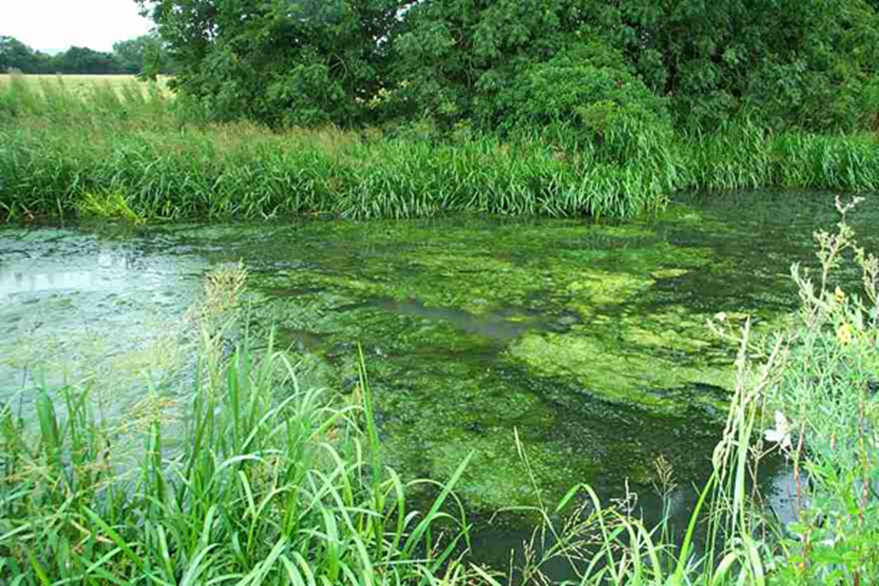Key science findings or outputs
- Droughts have big effects on water quality. Reduced flows reduce dilution so that pollutant concentrations rise. Hence phosphorus levels rise causing eutrophication problems.
- The increased temperatures and reduced flow create the idea conditions for algal growth and future climate simulation suggest increases of nuisance/toxic cyanobacteria blooms.
- Nitrogen is denitrified in river sediments and hence lower flows generally result in longer residence times and hence increased denitrification in rivers.
- Rising Dissolved Organic Carbon from upland peaty areas can be exacerbated in droughts, when more carbon can be oxidised, and flushed out in post drought rains. High DOC imposed extra treatment costs on water companies.
- Post drought rains can flush out nutrients (especially Nitrogen ) and sediments from the dry soils, creating poor water quality in rivers, that can affect fisheries, invertebrates and plant ecology
Introduction
Whilst droughts are normally associated with water scarcity and water resource problems, in fact water quality can deteriorate significantly in low flows and this can impose an extra constraint on water use. So excessive blooms of algae can block water treatment plant filters, or cause toxic conditions in rivers, and reduced dilution increases pollutant concentrations in rivers. In addition the build-up on Nitrogen, Phosphorus and sediments on soils in dry periods can be flushed out in post drought rain events. Reservoirs and rivers are also affected by the increased water temperatures during droughts, with changed chemistry, increased algal growth rates and lower oxygen concentrations.

Research methods
Extensive data sets have been obtained on water quality and ecology for the Thames systems. Dynamic and Process based mathematic models of flow, water quality and ecology have been developed for river systems and applied to key rivers such as the Thames, Kennet, Wye and Hampshire Avon. In addition an end member mixing model has been developed and tested on the Thames. This will be applied nationwide. Also we have utilised the PROTECH Reservoir model for assessing impacts on reservoir systems.


Further information
- P.G. Whitehead, G. Bussi, M.J. Bowes, D.S. Read, M.G. Hutchins, J.A. Elliott, S.J. Dadson. 2015. Dynamic modelling of multiple phytoplankton groups in rivers with an application to the Thames River system in the UK. Environmental Modelling & Software. 74, 75-91. doi:10.1016/j.envsoft.2015.09.010.
- P.G. Whitehead, H. Leckie, K. Rankinen, D. Butterfield, M.N. Futter, G. Bussi. 2016. An INCA model for pathogens in rivers and catchments: model structure, sensitivity analysis and application to the River Thames catchment, UK. Science of the Total Environment. doi:10.1016/j.scitotenv.2016.01.128.
- G. Bussi, P.G. Whitehead, M.J. Bowes, D.S. Read, C. Prudhomme, S.J. Dadson. 2016. Impacts of climate change, land-use change and phosphorus reduction on phytoplankton in the River Thames (UK). Science of the Total Environment. doi:10.1016/j.scitotenv.2016.02.109.
- Lu, M.N. Futter, L. Nizzetto, G. Bussi, M.D. Jürgens, P.G. Whitehead. Fate and Transport of Polychlorinated Biphenyls (PCBs) in the River Thames Catchment – Insights from a Coupled Multimedia Fate and Hydrobiogeochemical Transport Model. Science of the Total Environment. doi: 10.1016/j.scitotenv.2016.03.029.





